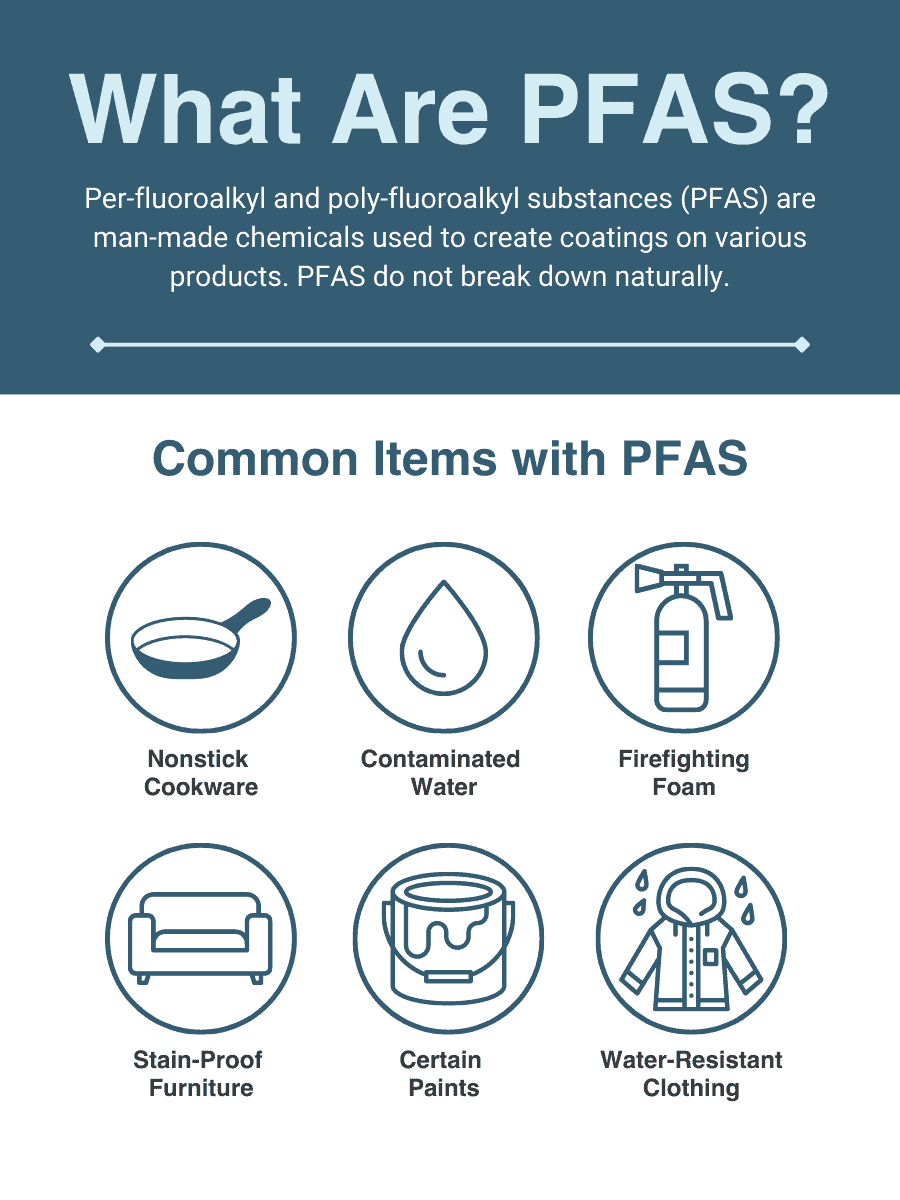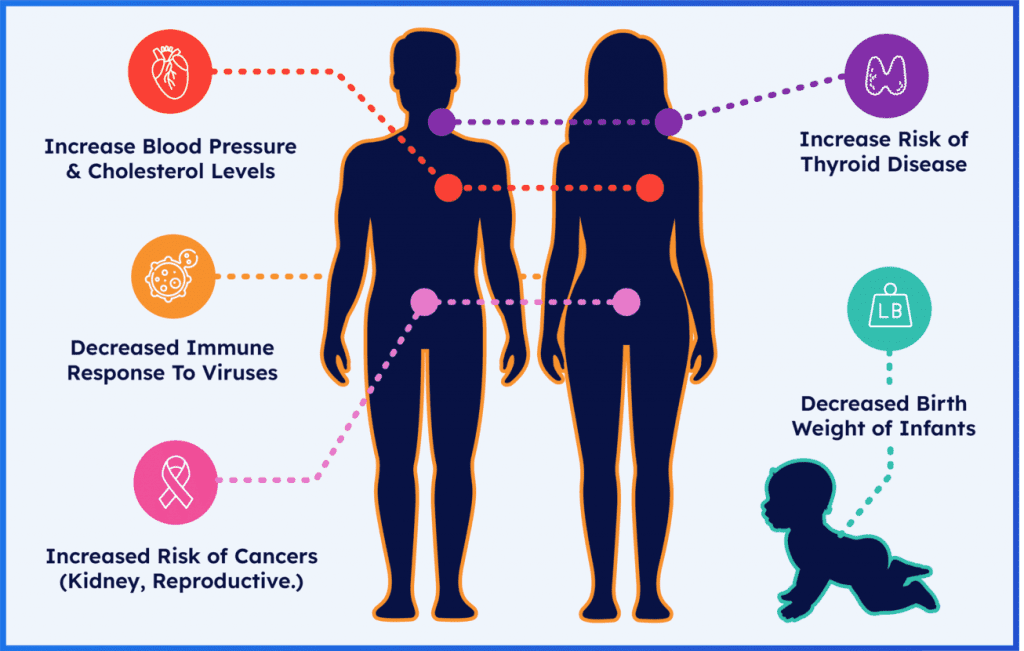If you’re a fan of refreshing and fizzy drinks, you’ve probably heard of PFAS in sparkling water. However, some people may find this an extremely dangerous health problem and worry excessively. Let’s learn with Nawon about the PFAS in sparkling drink in the following article.
What are PFAS chemicals?
PFAS, or Per- and Polyfluoroalkyl Substances, are a group of synthetic chemicals that are widely used in various industrial and consumer products because of their water- and grease-resistant properties. These chemicals are characterized by the presence of fluorine atoms, which make their carbon-fluorine bonds extremely stable and resistant to degradation. It means that PFAS chemicals persist in the environment for a long time. Given this stability, PFAS is called “forever chemicals”.
PFAS chemicals have been used in a wide range of products and applications, including:
- Non-stick cookware: PFAS chemicals have been used in the manufacturing of non-stick coatings like Teflon.
- Stain- and water-resistant fabrics: They are used in products like stain-resistant carpets and water-resistant outdoor gear.
- Firefighting foams: Certain types of PFAS have been used in firefighting foams, especially at airports and military bases.
- Food packaging: PFAS can be found in some food packaging materials to prevent oil and grease from soaking through.
- Electronics: They are used in electronics manufacturing for their heat-resistant properties.
The persistence of PFAS in the environment has raised concerns about their potential health and environmental effects. Some studies have shown that exposure to certain PFAS may have adverse health effects, including links to certain types of cancer, hormonal disruption, and developmental issues. As a result, there has been growing scrutiny and regulation of PFAS in various countries. Efforts are being made to phase out certain PFAS chemicals and reduce their presence in the environment.
It’s important to note that not all PFAS chemicals are the same, and they vary in their properties and potential risks. Some PFAS have been phased out and replaced with alternatives that are considered less harmful, but there is ongoing research and regulatory action in this area to better understand and manage the potential risks associated with these substances.

See more: Is Sparkling Water Good For You?
Does Sparkling Water Contain PFAS?
Yes, some sparkling water does contain PFAS chemicals in their content.
Consumer Reports (CR) is an organization that performs product reviews and investigative journalism. In late 2020, CR tested 47 brands of bottled water, sparkling water and similar products. The tests covered 30 PFAS chemicals. CR noted that many types of carbonated drinking water had “measurable amounts” of PFAS chemicals. In fact, most of the tested brands had total PFAS levels ranging from 1.1 to 9.76 ppt.
So the question is: What Level of PFAS in sparkling water is Safe? In the Consumer Reports study, the organization also listed sparkling water brands that contained levels of PFAS lower than 1 ppt — and, in other words, are potentially safer to drink.

Sparkling water with lowest PFAS list
- Schweppes PFAS (0.58 ppt)
- Dasani PFAS (0.37 ppt)
- San Pellegrino PFAS (0.31 ppt)
- Spindrift PFAS (0.19 ppt)
- Sparkling Ice PFAS (not detected)
Sparkling water with high level PFAS list
- Topo Chico PFAS (9.76 ppt)
- Polar Natural Seltzer Water PFAS (6.41 ppt)
- Bubly Sparkling Water PFAS (2.24 ppt)
- Poland Spring Sparkling Water PFAS (1.66 ppt)
- Canada Dry Sparkling Seltzer Water PFAS (1.24 ppt)
- LaCroix Natural Sparkling Water PFAS (1.16 ppt)
- Perrier Natural Mineral Water PFAS (1.1 ppt)
Please note that Consumer Reports conducted a study in 2020. However, several ranked sparkling brands announced that they have cuts in PFAS content in their sparkling waters. We will update this list as soon as new information becomes available.

See more: 15 Best Sparkling Water Brands
Are PFAS in sparkling water dangerous?
PFAS have raised concerns about their potential dangers to human health and the environment. While the overall risk can vary depending on the specific PFAS compound, exposure levels, and individual factors, here are some of the reasons why they are considered potentially dangerous:
- Persistence: One of the most concerning aspects of PFAS is their persistence in the environment and in the human body. PFAS do not break down easily, which means they can accumulate in the environment and in the bodies of living organisms over time.
- Bioaccumulation: PFAS can accumulate in the food chain. This means that if PFAS are present in the environment, they can move up the food chain, potentially leading to higher concentrations in animals and ultimately in humans who consume contaminated food or water.
- Health Concerns: Some studies have shown associations between exposure to certain PFAS and adverse health effects. These can include links to certain types of cancer (e.g., kidney and testicular cancer), thyroid disruption, developmental issues, immune system effects, and adverse pregnancy outcomes.
- Endocrine Disruption: Some PFAS compounds can disrupt the endocrine system by interfering with hormones, potentially leading to a range of health issues.
- Immune System Effects: There is evidence that certain PFAS chemicals can weaken the immune system, making individuals more susceptible to infections and diseases.
- Liver Toxicity: Some PFAS compounds can be toxic to the liver, potentially leading to liver damage and other related health problems.
- Potential Genotoxicity: There is some concern that certain PFAS chemicals may cause genetic damage, although more research is needed in this area.
Given the persistence and potential risks associated with PFAS, many experts and regulatory agencies advocate for minimizing exposure to these substances whenever possible. This can include using alternatives in manufacturing and avoiding products and materials that contain PFAS. It’s important to stay informed about the latest research and regulatory developments regarding PFAS to make informed decisions about their use and potential risks.

